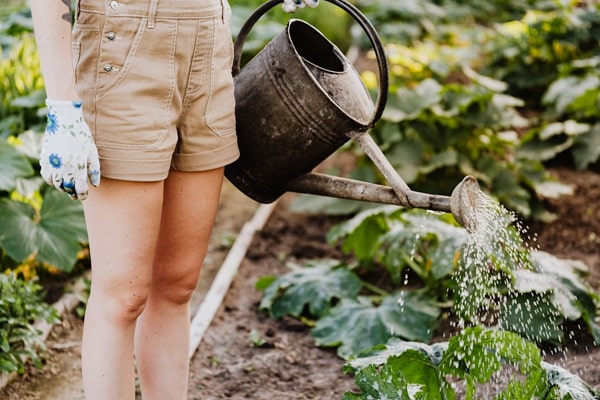Recovery from injury or illness is rarely a straight path. It often demands patience, resilience, and an active commitment to both physical and mental healing. While traditional rehabilitation methods like physical therapy and medication play a critical role, many people are turning to more holistic approaches to supplement their recovery journeys. One such approach that’s gaining traction is gardening.
Gardening is more than just a pleasant hobby—it’s a powerful therapeutic tool that supports physical, emotional, and psychological healing. Whether it’s tending to a small herb garden on a windowsill or cultivating a backyard oasis, gardening can significantly enhance the recovery process.
Gardening as Therapy: Recovering from Injury or Illness
Gardening can be a powerful part of the healing journey, offering gentle physical activity, fresh air, and emotional nourishment. Whether you’re recovering from surgery, managing chronic illness, or healing an injury, adapting your gardening routine can support your recovery.
Using raised beds or container gardens minimize bending, choosing lightweight tools can reduce strain, and taking frequent breaks will avoid overexertion. Even tending a windowsill herb garden or simply spending time among plants can boost your mood and aid in recovery. With a few mindful adjustments, gardening can remain a therapeutic and enjoyable part of your life.
1. Physical Rehabilitation Through Movement

Gardening involves a wide range of movements that are often prescribed in physical therapy. Tasks such as digging, planting, weeding, pruning, and watering require different levels of strength, balance, coordination, and fine motor skills. These gentle activities encourage mobility without the intensity that might lead to re-injury.
Benefits include:
- Improved flexibility and strength: Reaching, bending, and lifting help to stretch and strengthen muscles and joints.
- Enhanced motor skills: Fine motor coordination is developed through delicate tasks like seeding or pruning.
- Gradual cardiovascular stimulation: Light aerobic activity like raking or walking between garden beds helps build stamina.
For individuals recovering from surgeries (such as joint replacements), strokes, or neurological conditions, the repetitive but gentle motions in gardening can be an excellent form of low-impact physical therapy.
2. Boosting Mental and Emotional Wellbeing
Recovery isn’t just physical—it also has a profound mental and emotional component. Many people recovering from illness or injury struggle with anxiety, depression, frustration, or a sense of helplessness. Gardening can act as a grounding; restorative practice that helps ease these psychological burdens.
Therapeutic mental health benefits include:
- Reduced stress and anxiety: Being in nature and engaging with plants has been shown to lower cortisol levels and induce relaxation.
- Sense of purpose: Caring for living things and watching them grow can restore a sense of responsibility and achievement.
- Mood improvement: Exposure to sunlight increases serotonin production, helping improve mood and combat depression.
Horticultural therapy—formally recognized in clinical settings—often uses gardening as a tool for emotional healing in patients recovering from trauma, chronic illness, or mental health disorders.
3. Cognitive Stimulation and Focus

Recovery often requires retraining the brain. For patients recovering from neurological conditions like strokes or traumatic brain injuries, cognitive rehabilitation is key. Gardening engages several cognitive domains including planning, memory, attention, and problem-solving.
Examples of cognitive engagement through gardening:
- Planning garden layouts and planting schedules
- Remembering which plants need water or sunlight
- Identifying plant species and reading care instructions
- Adjusting techniques based on weather and plant response
These tasks can enhance neuroplasticity—the brain’s ability to form new connections—supporting cognitive recovery and improved daily functioning.
4. Social Connection and Community Engagement
Illness or injury can be isolating. Gardening offers opportunities to reconnect with others, which can be especially helpful for individuals dealing with long-term recovery.
Social benefits may include:
- Joining a community garden or horticulture therapy group
- Sharing garden produce or flowers with neighbors and family
- Participating in gardening classes or workshops
- Inviting friends or caregivers to assist in the garden
Social interaction is linked to faster recovery rates, lower levels of depression, and improved motivation. For those with limited mobility, even window boxes or container gardens can become conversation starters and a means of rejoining social circles.
5. Nutritional Support and Lifestyle Change

Gardening can support recovery from illness by contributing to a healthier lifestyle. Growing your own fruits, vegetables, and herbs can encourage better eating habits and reduce dependence on processed foods.
Nutritional benefits include:
- Access to fresh, organic produce that supports immune function and recovery
- Encouragement to cook more meals at home using homegrown ingredients
- Increased interest in healthy eating and food preparation
For individuals recovering from illnesses like heart disease, diabetes, or cancer, dietary improvements are often a key part of their recovery plan—and gardening naturally supports this shift.
6. Building a Sense of Empowerment and Control
After an injury or illness, people often feel they’ve lost control over their bodies or their lives. Gardening restores a sense of agency. Watching a plant grow under your care—flourishing through your efforts—can be incredibly empowering.
Gardening fosters:
- Resilience through dealing with setbacks (e.g., plants dying, pests invading)
- Self-efficacy by showing tangible results from consistent effort
- Routine and structure, both of which are important for recovery
By creating a nurturing space outdoors (or even indoors), individuals reclaim some control, building confidence that can spill over into other aspects of life.
Gardening and Healing

Gardening isn’t a one-size-fits-all solution—but it is a gentle, adaptable, and rewarding activity that supports healing on multiple levels. Whether someone is recovering from surgery, managing a chronic illness, healing from emotional trauma, or regaining mobility after an accident, the garden offers a quiet and powerful ally in the process.
Even the smallest steps—planting a seed, watching a flower bloom, pulling a weed—can help rebuild strength, hope, and well-being.
So, if you’re on a path to recovery, or supporting someone who is, consider the humble garden. It might just grow more than you expect.



